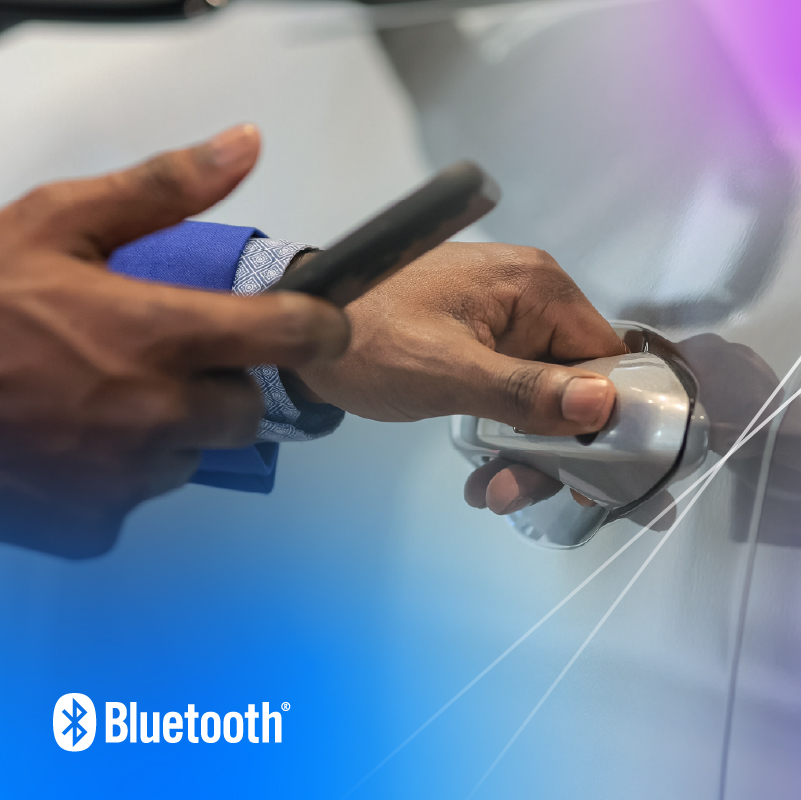How Texas Instruments is advancing Bluetooth® Channel Sounding for automotive and beyond
|
As the demand for smarter, more connected devices continues to rise, Bluetooth® LE has emerged as a cornerstone technology, enabling seamless, secure wireless communication across a wide range of industries. Texas Instruments (TI), a global leader in analog and embedded processing, is among those at the forefront of this evolution — developing and deploying Bluetooth® LE solutions that are transforming markets from automotive to smart homes.
Recently, TI introduced two new families of Bluetooth® LE microcontrollers (MCUs) tailored for consumer, industrial, and automotive applications. To understand how this technology is driving the future of digital keys and device positioning, I spoke with Peder Rand, director of ecosystem partnerships, standard alliances, and technology strategy for the connectivity business unit at TI.
A legacy of Bluetooth® innovation
TI has long played a pivotal role in the advancement of Bluetooth® technologies. Since releasing its first automotive-qualified Bluetooth LE MCU in 2015, the company has collaborated with automakers and Tier 1 suppliers to create high-performance wireless connectivity solutions. “Through our contributions to the Bluetooth Special Interest Group (SIG) Working Group, we have helped shape solutions that meet stringent requirements for security, cost, and power consumption,” says Rand.
This commitment has helped enable the deployment of Bluetooth® Channel Sounding, a new solution for high-accuracy distance measurement that is now being integrated into digital key systems around the world.
Bluetooth® digital keys

Digital key systems rely on precise, reliable wireless communication to unlock and start vehicles based on the proximity of a smartphone or fob. Bluetooth® LE is uniquely positioned to meet this need thanks to its universal interoperability and power efficiency. “Interoperability is crucial,” said Rand. “Our solutions achieve over 99 percent connection rates across device ecosystems, which is vital for consistent performance across different brands and smartphones.”
And what began in the automotive world is quickly spreading to other industries. Residential smart locks, commercial access control systems, asset tracking, and smart buildings all stand to benefit from Bluetooth® Channel Sounding. “The beauty of the technology is that it adds positioning capabilities to existing Bluetooth devices at a relatively low cost,” said Rand. “This opens the door for widespread adoption across sectors.”
In addition to unlocking doors, the technology can enable space-aware automation, triggering lights, HVAC systems, or alerts based on device position within a building.
Bluetooth® Channel Sounding vs UWB and NFC
While ultrawideband (UWB) and near-field communication (NFC) are also used in access control, Rand views these technologies as complementary, not competitive. “Bluetooth® Channel Sounding offers an excellent balance of precision, power efficiency, and scalability,” said Rand. “In systems where speed, reliability, and security matter — such as when a user approaches their car or front door — it delivers measurable advantages.”
Moreover, TI’s experience with UWB, NFC, and Bluetooth connectivity allows it to help OEMs design hybrid systems tailored to their specific performance and cost targets.
A broader role for Bluetooth® connectivity in vehicles
Bluetooth technology is also evolving beyond access control to support a growing number of in-vehicle functions. One emerging application is wireless communication within the car itself. “We are exploring how Bluetooth technology could reduce the complexity and weight of wiring harnesses,” said Rand. “Replacing cable-based connections between seats, mirrors, and controls with wireless links could streamline manufacturing and reduce costs.”
Bluetooth connectivity can also be used to interface with sensors like tire pressure monitoring systems, using existing infrastructure from digital key anchors.
As Bluetooth® technology continues to evolve, TI is committed to developing robust, energy-efficient solutions that bridge today’s connected needs with tomorrow’s possibilities. With its expertise in connectivity, commitment to open standards, and strong industry partnerships, Texas Instruments is using Bluetooth connectivity to help make wireless access smarter, faster, and more secure.